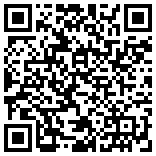Forex trading, if you’re among those wondering, is simply the direct access trading of several foreign currency types. Due to recent advances in technology, small traders, through the use of the various online platforms of trade, can benefit from forex trading whereas in the past, forex trading was basically restricted to large institutional traders and banks.
The currencies of the world are always traded in pair and are on a floating rate of exchange, e.g. Dollar/Yen, Euro/Dollar etc. Trading of the world’s major currencies account for about 85% of all transactions that are carried out on a daily basis. For investment purposes, four major currency pairs are usually used. They include Euro/US Dollar, US Dollar/Yen, British Pounds/US Dollar, and US Dollar/Swiss franc. In the trading market, this is how they look: EUR/USD, USD/JPY, GBP/USD and USD/CHF. It should be noted that there aren’t any dividends paid on currencies.
You can exchange the second currency for the one that comes before it and stay in it if you are of the opinion that a particular currency is going to appreciate against the other. You can eventually make the opposite deal, if everything goes as planned, in which you exchange the first currency for the second and take the profits that come from it.
Dealers at forex brokerage companies and major banks perform the transactions on the forex market. It’s a crucial part of the worldwide market so even when you’re off to bed, the Japanese dealers will be busy trading with their counterparts in Europe though clients can place stop loss and take-profit orders with brokers for execution overnight. The forex market is active 24/7 with dealers at major institutions constantly working in 3 different shifts.
The turnover on the forex market on a daily basis is about $1.2 trillion. The gaps experienced on the stock market almost every morning is absent from the forex market and the price movement are very smooth. Any new investor can, without any problems, enter and exit positions.
This market, the foreign exchange market as it is also called or the FX market, which is the oldest and largest financial market and the most liquid market in the world never stops. It is majorly traded through the inter-bank currency market 24 hours daily.
ʻI hono fakafehoanakí, ʻOku mahino ko e maketi paʻanga ʻi he kahaʻu ʻoku 1% ʻOku ʻikai fakatefito e ngaahi paʻanga fakafonua lalahi mo e fefakatauʻaki ʻi he fakafetongi ʻo hange ko e kahaʻu mo e maketi. ʻOku ngaʻunu kakato ʻa e fefakatauʻaki mei he ngaahi senita fakapangike lalahi ʻi he US ʻo fakafou ʻi Nuʻu Sila mo ʻAositelelia, ko e Hahake Mamaʻó, ʻIulope pea foki ki he ʻIunaiteti Siteiti.
Due to the strict financial requirements and huge minimum transactions the inter-bank Forex market was unavailable to small spectators, in the past. The principal dealers at the time were very large spectators, major currency dealers and banks and these were the only people who took advantage of most of the world’s basic currency exchange rates that have a strong trending nature, and the great liquidity of the FX market. But with FX market brokers who’re able to break down the inter-bank units that are large in size, any small trader like you and I now have the opportunity to both sell and buy as many small units as you want. Now with these brokers, smaller companies or individuals – any sized traders, can have the option to trade at the same price movements and rates as those who formerly dominated the market –the big players.































































































 Fakamatala ki he Fafanga ʻo e RSS
Fakamatala ki he Fafanga ʻo e RSS